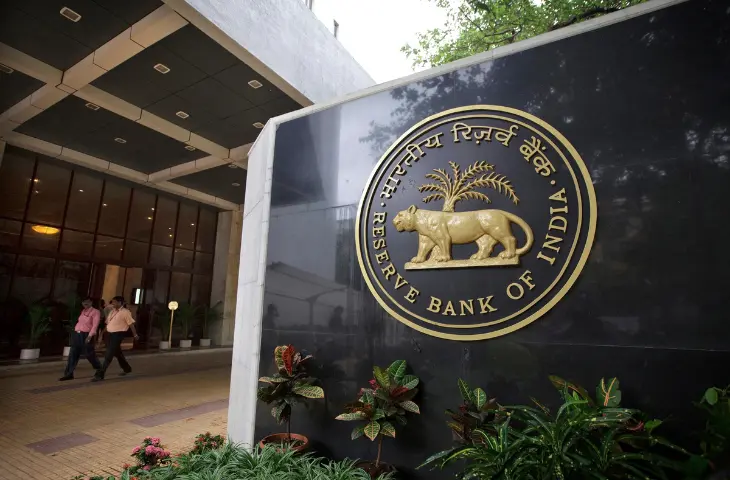For any student preparing for Banking Awareness in exams like IBPS PO, SBI PO, RBI Grade B, NABARD, RRB, or even UPSC, one of the most frequently asked concepts is the Cash Reserve Ratio (CRR). It is one of the most important monetary policy tools used by the Reserve Bank of India (RBI) to control inflation, regulate liquidity, and ensure financial stability in the banking system.
A clear understanding of CRR not only helps in exams but also builds conceptual clarity about how banks and RBI interact to maintain economic balance. Let us study the meaning, formula, importance, advantages, and effects of CRR in detail.
What is Cash Reserve Ratio (CRR)?
The Cash Reserve Ratio (CRR) is one of the most important Banking Awareness Terms which refers to the minimum percentage of a commercial bank’s Net Demand and Time Liabilities (NDTL) that must be kept with the Reserve Bank of India (RBI) in the form of cash.
- This percentage is decided by RBI from time to time through monetary policy reviews.
- CRR is a statutory requirement under the RBI Act, which every commercial bank has to follow.
- The reserves kept under CRR cannot be used for lending or investment purposes.
- RBI does not pay any interest on the funds maintained as CRR.
In short, CRR acts as a safety mechanism to ensure that banks always have liquidity to meet customer withdrawals, while also giving RBI a powerful tool to regulate the flow of money in the economy.
Why is CRR Important in Banking Awareness?
For banking exam aspirants, CRR is important because it is not only a definition-based topic but also linked with economic implications. Understanding CRR helps candidates answer questions on inflation, liquidity management, and monetary policy. Here’s why CRR is significant in the banking system:
- Depositor Safety – It ensures that banks maintain a portion of deposits with RBI, making depositor funds more secure.
- Inflation Control – By raising or lowering CRR, RBI controls the supply of money in the economy.
- Monetary Policy Transmission – It directly affects lending rates, borrowing capacity, and interest rates.
- Banking Discipline – Prevents banks from lending excessively and ensures liquidity management.
- Exam Relevance – Questions on CRR often appear in IBPS, SBI, UPSC and RBI Exams.
Formula of CRR
The formula to calculate CRR is straightforward:
CRR (%) = (Cash Reserves maintained with RBI ÷ Net Demand and Time Liabilities) × 100
Example:
If a bank has ₹20,000 crore NDTL and CRR is 4%, then the bank must keep:
4% of ₹20,000 crore = ₹800 crore with the RBI.
What is NDTL?
- Net Demand and Time Liabilities (NDTL) = Savings Deposits + Current Deposits + Fixed Deposits – Deposits with other banks.
- This represents the total liabilities that a bank owes to the public and other institutions.
For exams, remember: CRR is always a percentage of NDTL.
Functions of Cash Reserve Ratio (CRR)
The cash reserve ratio is not just a regulatory requirement but a powerful monetary policy tool that influences the entire banking ecosystem. Its major functions are
- Liquidity Management
- By mandating banks to keep a fixed percentage of their deposits with RBI, CRR ensures that banks don’t run out of liquidity.
- Example: If CRR is raised from 4% to 5%, banks immediately lose 1% of lending capacity, tightening liquidity in the economy.
- Inflation Control
- When inflation is high, RBI increases CRR so that banks have less money to lend. This reduces demand for loans and controls rising prices.
- During deflation, RBI lowers CRR to encourage lending and stimulate demand.
- Monetary Stability
- CRR prevents sudden fluctuations in money supply by acting as a cushion.
- It ensures a stable and predictable flow of funds in the economy, which is critical for growth.
- Financial Discipline in Banks
- CRR prevents banks from over-lending and taking excessive risks with depositor money.
- It acts as a regulatory check that keeps the banking system healthy.
- Policy Implementation by RBI
- CRR gives RBI direct and immediate control over money supply.
- Unlike repo or reverse repo, CRR changes have a direct impact because they immediately alter banks’ available funds.
In exams, remember: CRR = Liquidity + Inflation Control + Monetary Stability + Discipline + Policy Tool.
Advantages of CRR
The cash reserve ratio provides multiple benefits to both the financial system and depositors. Let’s look at them in detail:
- Quick Liquidity Adjustment Tool
- CRR is one of the fastest tools for RBI to control liquidity. Any change in CRR immediately impacts banks’ lending power.
- Depositor Confidence and Trust
- Since banks keep a portion of deposits with RBI, customers feel secure that their money is not entirely at risk.
- Reduction of Bank Risks
- In times of financial crises or unexpected withdrawals, CRR ensures banks still have reserves to fall back on.
- Acts as a Safety Buffer
- CRR creates a buffer against economic shocks by reducing excessive money supply during booms and increasing liquidity during slowdowns.
- Supports Monetary Policy Objectives
- Helps RBI balance inflation, growth, and stability effectively.
- Example: If inflation is at 7%, RBI may raise CRR to reduce liquidity; if growth slows to 4%, RBI may cut CRR to encourage lending.
Effects of CRR on Banks, Depositors, and the Economy
The impact of CRR can be felt at multiple levels- banks, depositors, borrowers, and the economy as a whole.
| Aspect | When CRR is Increased | When CRR is Decreased |
| Bank Lending | Banks have less money to lend; credit flow reduces. | Banks have more funds for loans, and credit flow increases. |
| Interest Rates | Loan rates rise due to lower liquidity. | Loan rates may fall due to higher liquidity. |
| Inflation | Money supply decreases → demand falls → inflation controlled. | More lending → demand rises → may increase inflation. |
| Economic Growth | Slows down as businesses get fewer loans. | Boosts growth as loans become easily available. |
| Depositor Safety | Higher CRR improves safety, as funds are with RBI. | Lower CRR reduces safety cushion, though banks gain flexibility. |
Real-Life Example:
- In 2010–11, RBI raised CRR to control rising inflation. Lending slowed, but inflationary pressures eased.
- In 2020 (COVID-19 pandemic), RBI reduced CRR by 100 basis points (to 3%) to inject ₹1.37 lakh crore liquidity into the system. This boosted lending and supported economic recovery.
For exams: High CRR = Less Lending + Inflation Control | Low CRR = More Lending + Growth Boost.
Current CRR Rate in India
The CRR rate is decided by RBI’s Monetary Policy Committee (MPC) during its bimonthly monetary policy meetings. The current CRR is 4%.
- The permissible range of CRR is usually between 3% and 15% of NDTL.
- The rate changes depending on inflation, growth, and liquidity requirements.
- Aspirants must check the latest RBI Notifications for the current CRR before the exam.
CRR vs SLR Key Differences
For exams, CRR is often asked along with SLR (Statutory Liquidity Ratio).
| Basis | CRR | SLR |
| Meaning | Portion of NDTL kept with RBI in cash | Portion of NDTL maintained by banks themselves in liquid assets (cash, gold, govt securities) |
| Form | Only cash | Cash, gold, or approved securities |
| Interest Earned | No interest on CRR | Banks can earn interest on govt securities under SLR |
| Purpose | Controls liquidity and inflation | Ensures financial stability and credit discipline |
Practice Questions on Cash Reserve Ratio (CRR)
Here’s a set of questions to test your preparation for Banking and Insurance Exams:
- What does CRR stand for in banking?
- Who decides the CRR in India?
- What is the formula to calculate CRR?
- Does RBI pay interest on CRR deposits?
- What is the current CRR rate in India?
- CRR is a percentage of which liability of banks?
- What does NDTL stand for?
- If a bank has ₹8,000 crore NDTL and CRR is 4%, how much must it deposit with RBI?
- Which committee of RBI decides on CRR changes?
- How does a higher CRR affect lending capacity?
- Is CRR a quantitative or qualitative tool?
- How does lowering CRR impact inflation?
- Write two differences between CRR and SLR.
- Why is CRR important for depositor confidence?
- During high inflation, does RBI increase or decrease CRR?
FAQs
The Cash Reserve Ratio (CRR) is the minimum percentage of a commercial bank’s net demand and time liabilities (NDTL) that must be kept with the Reserve Bank of India (RBI) in cash. It helps regulate liquidity and control inflation in the economy.
A high CRR reduces liquidity in the banking system, which controls inflation but slows economic growth. A low CRR increases liquidity, boosting lending and growth but may cause inflation if demand rises sharply.
The key functions of CRR include liquidity management, inflation control, maintaining monetary stability, ensuring financial discipline in banks, and supporting RBI’s monetary policy implementation.
CRR is a direct and powerful tool for RBI to control money supply. By increasing or decreasing CRR, RBI can quickly influence bank lending, deposit safety, inflation, and overall economic stability.
The current CRR rate in India is 4%. RBI reviews CRR during its Monetary Policy Committee (MPC) meetings to balance inflation and growth.
- PNB LBO Syllabus and Exam Pattern 2025, Check Details

- PNB LBO Salary 2025, In Hand Salary, Perks, and Allowances

- Bank of Baroda LBO Group Discussion, Topic List, Complete Guide

- Bank of Baroda LBO LPT, State-wise Languages & Full Details

- Bank of Baroda LBO Interview Questions and Answers, Download FREE PDF

- IBPS Clerk Vacancy 2025 Increased upto 15701, Check Details

Hi, I’m Tripti, a senior content writer at Oliveboard, where I manage blog content along with community engagement across platforms like Telegram and WhatsApp. With 3+ years of experience in content and SEO optimization related to banking exams, I have led content for popular exams like SSC, banking, railways, and state exams.
